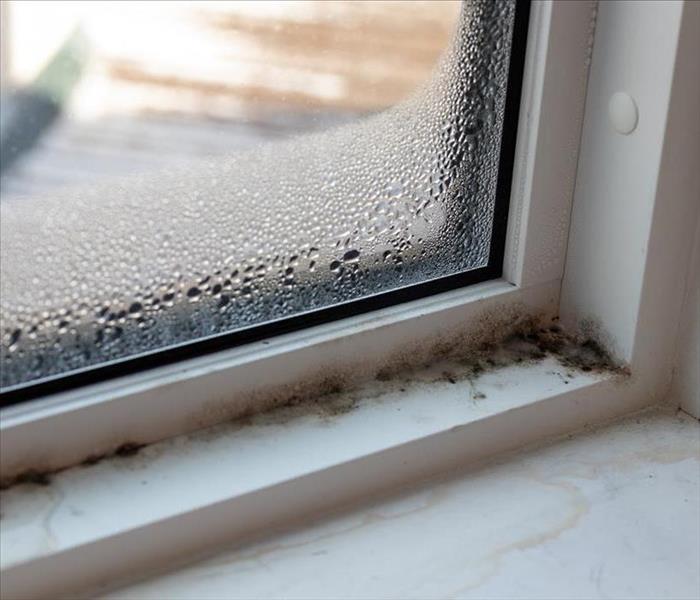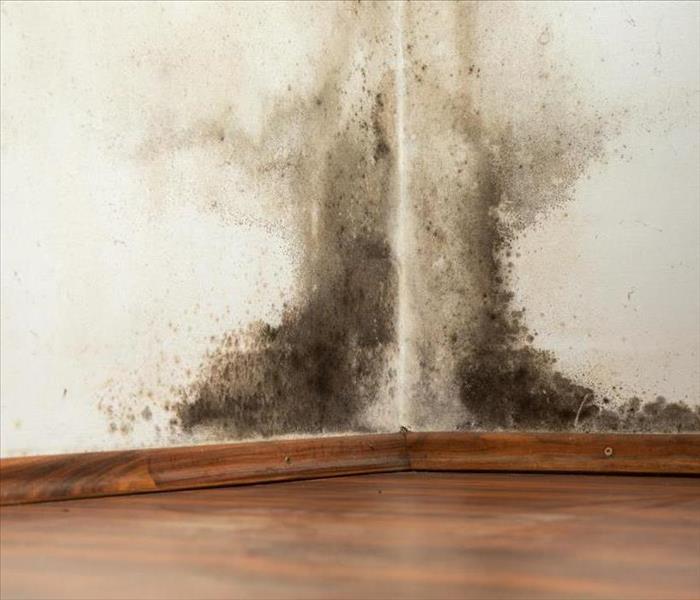Archived Mold Remediation Blog Posts
Mold Can Be A MONSTER | SERVPRO® of Cedar Mill/Oak Hills
7/26/2022 (Permalink)
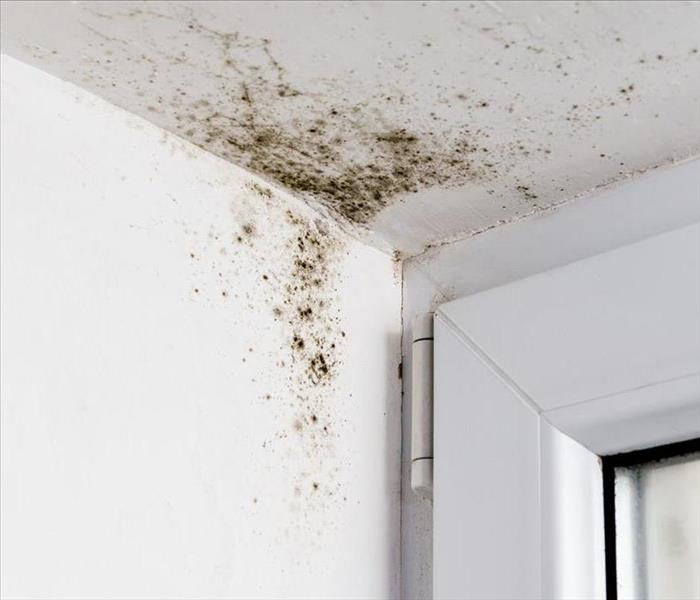 Seeing signs of mold in your home or business? Contact us today to get remediation started.
Seeing signs of mold in your home or business? Contact us today to get remediation started.
No one likes to think about dealing with mold damage — and the potential impact on your health mold can pose. However, every year thousands of business & homeowners find themselves needing mold remediation services, especially in the Pacific Northwest.
Signs of mold in your business or home can vary and may include damp spaces, a musty odor or discoloration on your ceiling, walls, or floors. You might also notice peeling paint, wood starting to warp or maybe even see the growth with your own eyes. If you notice any of these signs in your business or home, then it’s smart to consider reaching out to a trusted partner for an inspection.
How SERVPRO of Cedar Mill is different
When it comes to mold remediation, we are a trusted local partner for many businesses and families. Here’s why so many people trust our team:
- Our team is available 24/7
When it comes to restoration, time is always of the essence. That means the sooner you can meet with a certified restoration technician and get a plan for remediation in place, the better your business or home will be able to recover. Being proactive will save you time, money, and worry.
- We have highly trained mold remediation specialists
Calling our team connects you with restoration technicians who have all the skills and knowledge needed to assess your situation and create a personalized plan for correcting it. We have the expertise and experience you’ll want on your side, and we’ll help guide you through the process step by step.
- We use the latest technology
By combining highly trained experts and leading-edge technology, we can use the latest strategies to help your business or home overcome a mold threat. We work to restore your business or home in a way that’s both logical and economical.
We are always here to help our friends and neighbors in Cedar Mill, Oak Hills, Bethany, Beaverton and the surrounding communities to restore their businesses and homes. Our services also come backed with the security and expertise of a national organization.
If you are experiencing or suspect you have a mold problem, or just want to learn more about our mold restoration services contact SERVPRO of Cedar Mill/Oak Hills today for an estimate.
Help When Your Oak Hills Home Needs Mold Remediation | SERVPRO® of Cedar Mill/Oak Hills
1/7/2021 (Permalink)
No one likes to think about dealing with mold damage at home—and the potential health hazards mold can pose. But millions of American families every year find themselves needing mold remediation services.
Signs of mold in your home can vary and may include damp spaces, a musty odor or discoloration on your ceiling, walls, or floors. You might also notice peeling paint, wood warping and even physical symptoms, especially if you suffer from certain types of allergies or asthma.
If you notice any of these signs in your home, then it’s smart to consider reaching out to a trusted partner for an evaluation of your home. They can tell you more about mold remediation and restoration services.
How SERVPRO Is Different
When it comes to mold remediation, we’re a trusted local partner for many families. Here’s why so many residents trust us:
Our team is available 24/7. When it comes to home restoration, time is always of the essence. That means the sooner you can meet with a certified restoration technician and get a plan for remediation in place, the better your home will be able to recover. Getting started fast saves you both time and money.
We have highly trained mold remediation specialists. Calling our team connects you with home restoration technicians who have all the skills and knowledge needed to assess your situation and create a personalized plan for correcting it. They have the expertise and experience you’ll want in your corner.
We use the latest technology. By combining highly trained experts and leading-edge technology, we can use the latest strategies to help your home overcome a mold threat. We work to restore your home in a way that’s both logical and economical.
We are a local business. We are always here to help our friends and neighbors in Cedar Mill, Oak Hills, Bethany, Beaverton and the surrounding communities restore their homes. But our services also come backed with the security and expertise of a national organization.
If you need help with mold remediation, you can depend on us to help. Contact us 24 hours a day to report damage and receive a quick response from our certified restoration technicians. Get in touch today.
Don't let the mold get too old...
4/23/2019 (Permalink)
How much do you know about microbial growth?
We see it frequently. In fact, we are so adamant about mold that we want to make sure everyone else knows what potential hazards microbial growth could cause. There's a life cycle that many are unaware of, and this article could possibly help you understand how it all works!
When an organic material, such as wood, gets an abundance of water exposure - it only takes between 24-72 hours for microbial growth to start developing. The key components for growth includes nutrients, temperature, light, aeration, pH and water activity.
The first stage is called hyphal growth, which is the stage where hyphae goes to obtaining it’s nutrition. The hyphae will grow into a mycelium, the main body of the fungus which is also the visible portion.
The second stage is called Spore formation. This is when spores grow on the end of hyphal cells.
The third stage is called Spore Dispersal. After the spores are formed, they are released into the air and carried elsewhere to begin the process of germination and growth all over again. Mold spores are highly resistant and durable. They can remain dormant for years in even hot and dry environments.
The final stage of the process is called Spore Germination. Once the spore is dispersed to a new area and when the optimal conditions exist, moisture and nutrient availability, the spore will begin to germinate into a new hyphael cell.The life cycle of mold then begins again.
If you suspect microbial growth is forming in your home, you can have the confidence that SERVPRO of Cedar Mill / Oak Hills will be there to fix the situation immediately!
How mold works
4/8/2019 (Permalink)
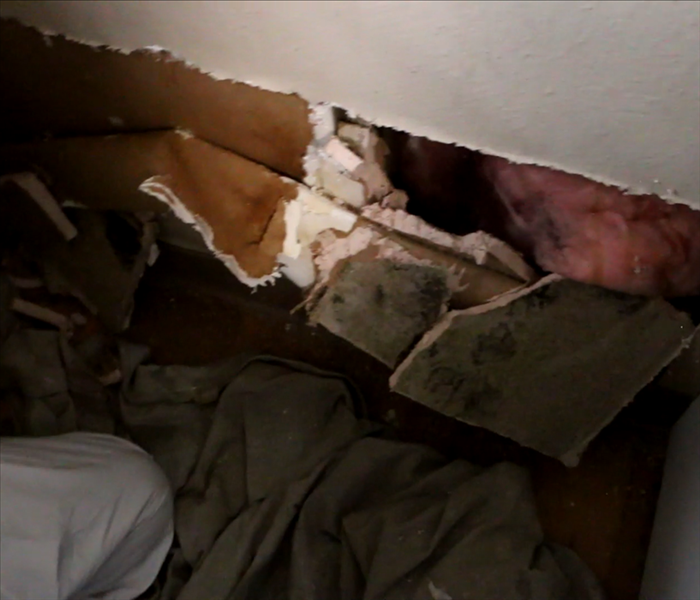 One of our technicians handling demolition due to water loss, and stumbling further upon microbial growth.
One of our technicians handling demolition due to water loss, and stumbling further upon microbial growth.
It's a nasty thing to have around your property, and ultimately it's a perfect recipe for more ongoing issues. Microbial growth. When people experience a water damage situation that doesn't get resolved immediately, every hour that goes by is just another step closer to having to deal with mold.
Other ways that microbial growth can enter a home is:
- Flooding from surface waters (i.e., overflowing rivers) or from severe storms;
- Roof leaks from damaged or missing roofing materials, ice dams or blocked gutters;
- Storm-driven rain through window frames, exterior walls or door assemblies;
- Leaking pipes, sewer back-ups or overflows;
- Damp basements or crawl spaces due to a high water table or poorly managed rainwater drainage; and
- Condensation on cold surfaces
Microbial growth is something that can't just get 'wiped away' or easily taken care of. If not treated properly, there's a substantial risk it'll appear soon again. That's why we highly encourage that any suspicion for mold should be addressed to SERVPRO of Cedar Mill / Oak Hills, because we offer free mold inspections and remediation services!
What mold holds the most dominance?
3/11/2019 (Permalink)
It's a legitimate question. There's a huge variety of mold types, and some actually hold the capability to dominate any other mold within the environment it's growing in.
Studies have actually shown that mold grows best when exposed to moisture for at least a week, or more. When its food source is low in nitrogen and high in cellulose, (organic materials) Black mold is happy… us and other molds, not so much.
Although different mold colonies will likely grow beforehand, once the black mold takes form, it will dominate the environment completely. This nightmarish fungi won't just go away on it's own either. It can be dried up, and still remain alive and well. It’s true… Stachybotrys (black mold) and several other mold types can sit dormant for thousands of years until it gets wet, allowing new growth to take form.
For this reason, we strongly recommend calling in a professional remediation business that you can trust and make it seem "Like it never even happened." So if you are ever experiencing microbial growth in your residence, don't hesitate to call us at (503) 619-6198!
More about mold!
2/25/2019 (Permalink)
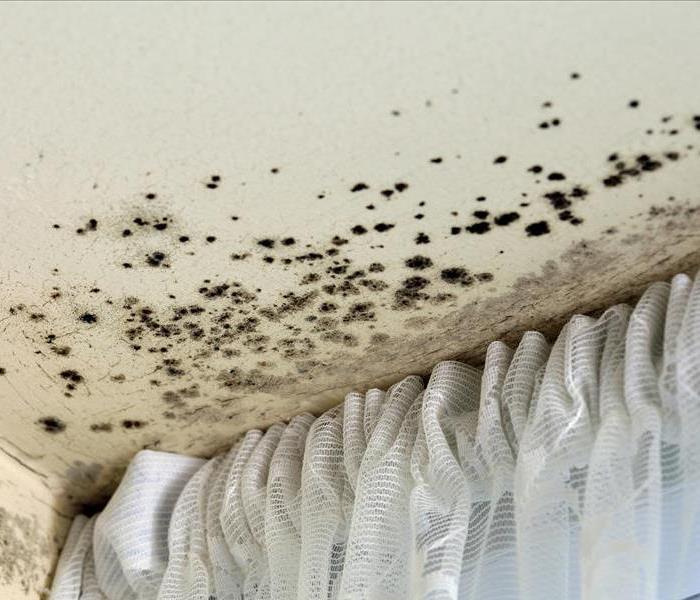 Ceilings with high humidity rooms pose an increased risk for microbial growth.
Ceilings with high humidity rooms pose an increased risk for microbial growth.
Have you ever wondered how long it would take a full room to grow in mold, considering it had optimal temperature and humidity?
Microbial growth (mold), is nothing to delay if it's seen in your home. It only takes 24-48 hours to generate and grow under ideal conditions. Typically, the spores begin to colonize in 3 to 12 days and become visible to the eye in about 18-21 days.
The concern for many is that mold will grow without any notice until it's too late. Once mold can be identified, it goes on to killing the bacteria using specialized solutions and equipment, then removing it permanently. There's a misconception that it can be simply cleaned and gone. It gets more complex than that. Give SERVPRO of Cedar Mill / Oak Hills a call if you need to have mold identification and remediation in your home!
How to prevent mold on patio furniture
2/22/2019 (Permalink)
If you’re hoping to save your current furniture or you’ve bought a new patio set and want to keep it from falling victim to the same problem, you can take steps to prevent mildew and mold. When purchasing new furniture, look for water-resistant fabrics and materials and check to see if the dyes used are also weather-resistant. Acrylic and polyester are usually the most durable. You can also waterproof your patio furniture yourself by purchasing a waterproofing kit at your local supply store.
Note that sunscreen and bug spray are known to soak into cushions, so always use a towel to sit on as added protection, and never sit down directly after coming out of the pool. If you do spill water or otherwise soil the furniture, clean it immediately, and do routine cleaning every few weeks. If you do not use your patio furniture year-round, consider using furniture covers, or find a shed, garage, or storage unit to house it during the off season.
Now that you know how to remove mold and mildew from patio furniture, you can clean up your chairs, table and umbrella to return it to good condition. You’ll be back to lounging out in the summer heat in no time. If you ever have any further questions about mold tips, contact us at (503) 619-6198!
Most common places to look for mold
1/10/2019 (Permalink)
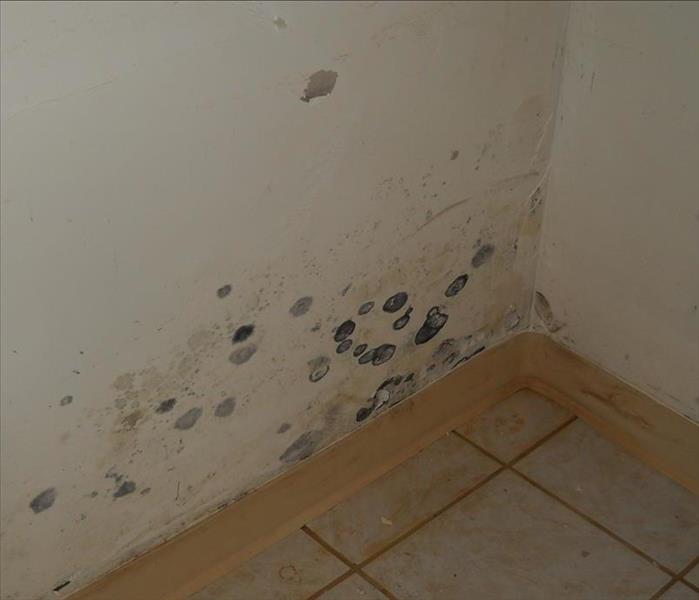 A demonstrated example of how mold can sneak behind your refrigerator!
A demonstrated example of how mold can sneak behind your refrigerator!
You know that mold is bad, ugly, and can be potentially dangerous. You also know, of course, that it should be removed immediately when it's found in your home. You might know what and how to look for any potential fungi spots. But where exactly should you be looking?
The 8 most common places for mold growth happens to be:
- Basements/Cellars that have been flooded
- Underneath Kitchen & Bathroom sinks
- Underneath or behind refrigerators
- Behind walls that also contain plumbing
- Damp or wet newspapers, or cardboard boxes
- Around air-conditioning units
- Around windows that leak
- Under carpeting that may have become wet
Nonetheless, it's important to occasionally investigate for any mold around the house. Especially when it's a season with high levels of rainfall.
Our technicians are professionally trained and equipped to ensure your mold issues diminish quickly and without hassle!
How dangerous is mold?
1/8/2019 (Permalink)
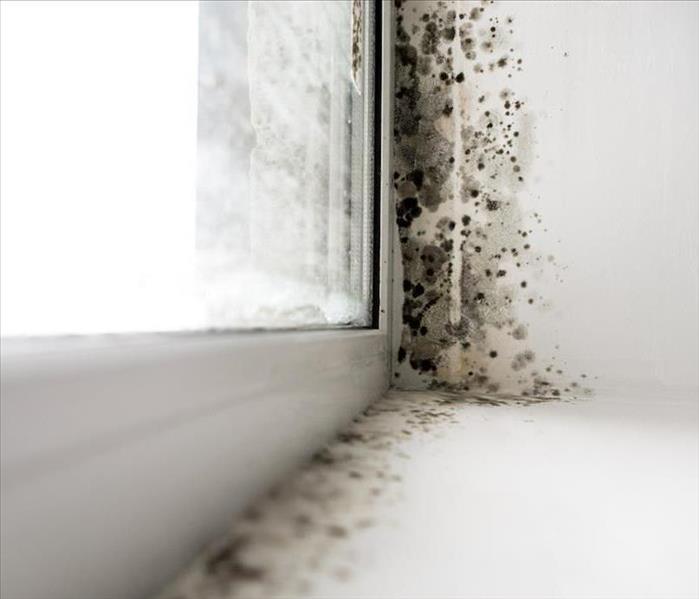 Stachybotrys Chartarum (black mold) is relatively rare, yet poses health risks to many.
Stachybotrys Chartarum (black mold) is relatively rare, yet poses health risks to many.
Great question!
According to the CDC:
"Exposure to damp and moldy environments may cause a variety of health effects, or none at all."
With that said, the most common indoor molds are cladosporium, penicillium, alternaria and aspergillus. Stachybotrys chartarum, often called toxic mold, is pretty rare to find.
But regardless of the health hazards that mold may pose, it's also a danger for homes in general. This includes a posed risk of wood rot, to terrible odors and stains. It only takes 24-48 hours in the right conditions for mold to form! So we advise anyone in this situation to neverlet it stand for too long.
If you need experts to assist in this case, we are available 24/7 to ensure the job is taken care of immediately!
Tips to Mitigating Mold in Cedar Mill!
5/18/2018 (Permalink)
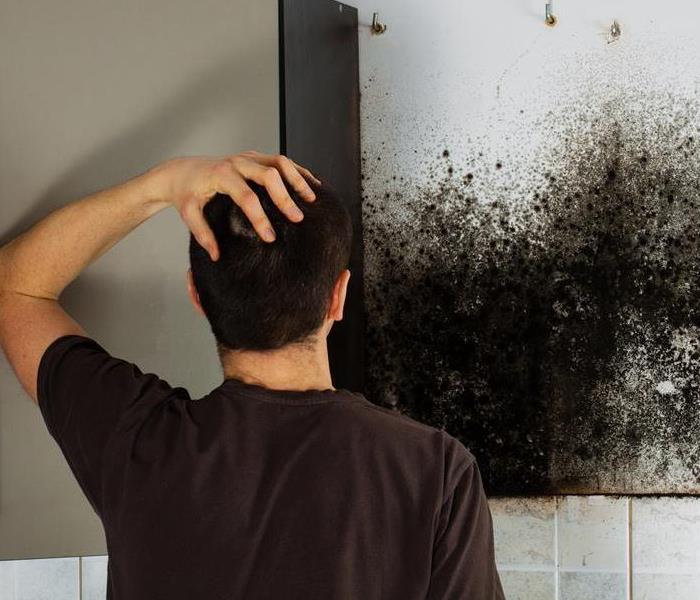 Don't let mold get to you and your home!
Don't let mold get to you and your home!
As we’ve mentioned in previous posts mold can certainly be dangerous and costly to remove and remediate. One of the best things to prevent having to get mold remediation services is to prevent the mold in the first place. There are mold spores all over the place and they will love to grow if you let them. Mold especially likes to grow in humid climates like Portland, Cedar Mill, Hillsboro, and Beaverton. Below are some quick tips for preventing mold damage in your home, office or building.
1. Detect and remedy mold friendly areas.
While you can’t eliminate mold completely you can help prevent it by making it challenging for mold to thrive. Mold likes to grow in damp, dark places so you can check your home or office for challenged spots where mold may grow.
- Check the basement for flooding
- Check around the house after a big rain to ensure there are no leaks
- Check the ceiling for water stains indicating a leak
- Check your gutters
2. Don’t leave wet spots or wet items.
Mold needs moisture to grow so don’t give it a chance to. If you have some flooding from a storm, a spill on the carpet or water from a leaky pipe, dry the area promptly. Failure to dry the area properly will result in mold growth. Be sure not leave wet items such as towels or clothes in a pile or in the washer, this can lead to mold and bacteria growth as well.
3. Prevent moisture and excess humidity with proper ventilation and air flow.
Ensure that humidity levels are low and there is proper ventilation. Ensuring there is proper ventilation in the shower, laundry room, attic or basement can help to ensure that it’s not humid for mold to grow. Air conditioners and dehumidifiers go a long way to remove the extra moisture in the air but even running a fan or opening a window can help get the circulation to prevent mold growth.
4. Ensure to have roof gutters in good working condition.
Mold can easily be caused by damaged gutters that result in a leak. Ensure your gutters are cleaned regularly and inspected for damage. Gutters play an important part of keeping your home in good shape and protected from the rain.
5. Use mold resistant items when possible.
It should be no surprise that if you utilize mold resistant items when possible then chance of having mold problems decreases immensely. There are many mold resistant products including:
- Mold Resistant Paint
- Mold Resistant Wood
- Mold Resistant Shower Curtains
- Mold Resistant Bath Mat
- and more
If you do end up having a mold problem that you are unsure what is causing it or how to rid it you may want to call in a professional to come and assess the scene. SERVPRO of Cedar Mill/ Oak Hills can check out your mold situation and remediate the situation as well as restore any damage caused by the mold.
Health issues from drastic changes in weather
5/17/2018 (Permalink)
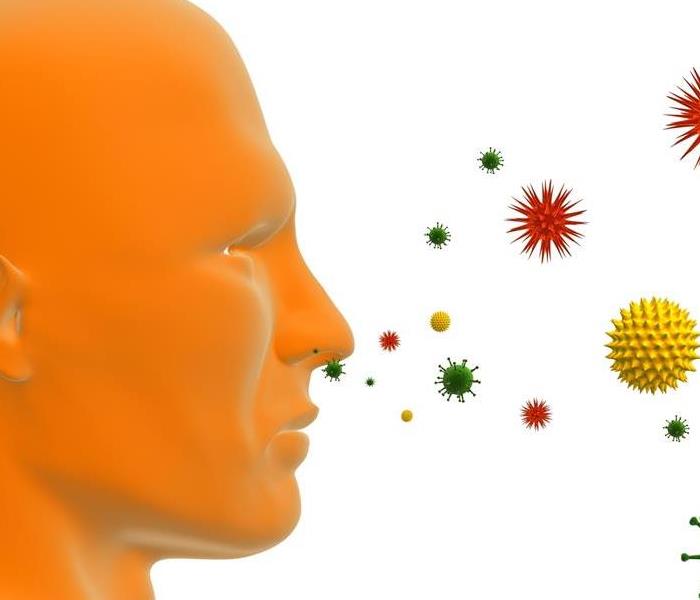 Allergy season is upon us
Allergy season is upon us
With the drastic changes of weather in the past few weeks, many household are more prone to a mold infestation that could be appearing from right under their noses. Especially during the Springtime, mold have an easier time growing, manifesting, and making a colony for itself in one’s household. Here at SERVPRO Cedar Mill/ Oak Hill, we are going to tell you the how, what, where, why of spotting mold and preventing it in your house.
Mold reproduce by means of spores, completely invisible to the naked eye therefore making it nearly impossible to spot until it manifests. Floating through the air until it finds its new home, but once it lands on a moist surface, the growth process begins. There are many different types of mold but all requires moisture and a food source surface to grow. Because of the common materials used to build houses, mold can easily attach itself and grow indoors. Examples such as flooding, water leakage, building maintenance, or indoor plumbing problems could lead to infestation of mold.
Many of the symptoms that cause by mold could be avoided if handled correctly. To prevent any future health problems from happening to you or your family give us a call right now at (503) 619 6198 for your free mold inspection (only available for a limited time)
Mold? What mold problem? Things that you don’t know about mold that can harm your home
4/12/2018 (Permalink)
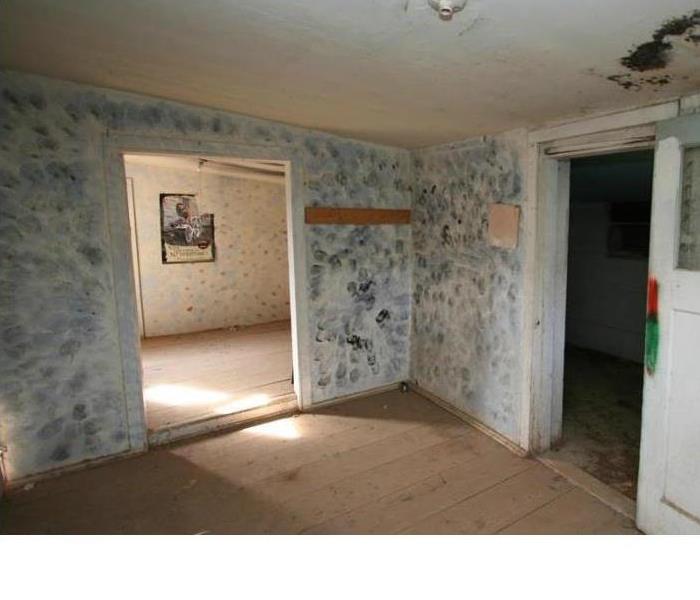 Got mold?
Got mold?
Mold can be a very intrusive and destructive invader, it deteriorates your home making it lose its value and beauty. But what can you do if you don’t even know that you have mold? Well here are a few steps that you could do once in a while to make sure you don’t have this pesky problem in your home.
Step 1: Determine the moisture level in your home
As mentioned before, mold can be very intrusive, especially because it’s stealthy about it’s invasion into your home. To prevent this from happening, first determine what type of moisture is in the nooks and crannies of your home. After that, see how the moisture is created and where it comes from, and then take necessary steps to prevent the moisture from coming back.
Step 2: Make plans for remediation and document the mold as you go
Take pictures or videos of any mold affected area in your home so that the service crew can refer to it as they devise your remediation plan that will restore your home to its former glory.
Step 3: Call SERVPRO of Cedar Mill/ Oak Hills
Give us a call as soon as possible so we can limit the damage that is being done to your home. Contact us at (503) 619-6198!
How Do I Know If I Have A Mold Problem?
2/23/2018 (Permalink)
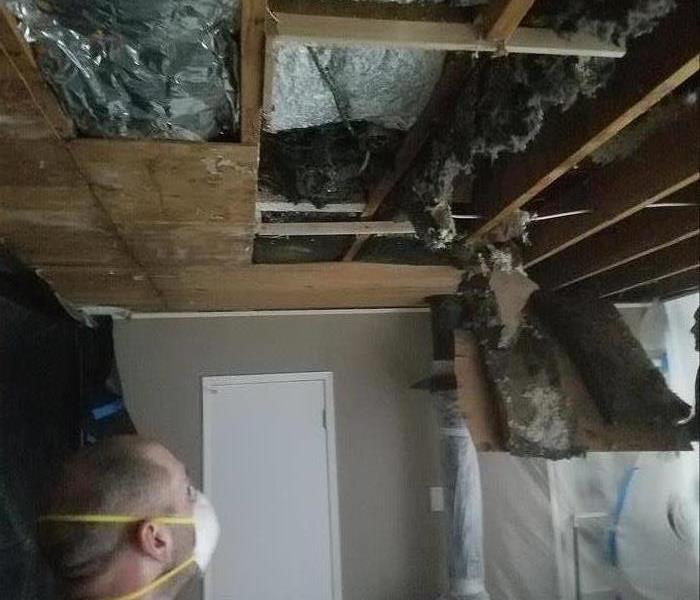 Call SERVPRO Cedar Mill/ Oak Hills for a Mold Inspection Today!
Call SERVPRO Cedar Mill/ Oak Hills for a Mold Inspection Today!
Essentially, if there is mold growth or a moisture problem, then you have or are likely to have a mold problem. It really is as simple as this: "If there has not been a water problem, then there is no mold problem."
However, determining if there is or has been a moisture problem can sometimes be difficult, especially if people are worried about past water problems that may have been intentionally covered up, as in the case of the sale or rental of a home, or if the leak may have occurred within a wall cavity or other difficult to directly inspect.
How Do I Prevent A Mold Problem?
The number one thing to do is prevent water problems and quickly clean up and fix any water problems that arise. Mold needs water to survive. This is why you don't see mold growing on saltine crackers or croutons; they are too dry. So if you have a leak, fix it. The trickier problems involve resolving condensation that may take place in basements or bathrooms. In these cases, you may need dehumidifiers or other measures to eliminate the moisture problem. SERVPRO Cedar Mill/ Oak Hills has the experience and equipment to help you out!
Tips To Help You Beat Mold In Your Home This Winter!
1/11/2018 (Permalink)
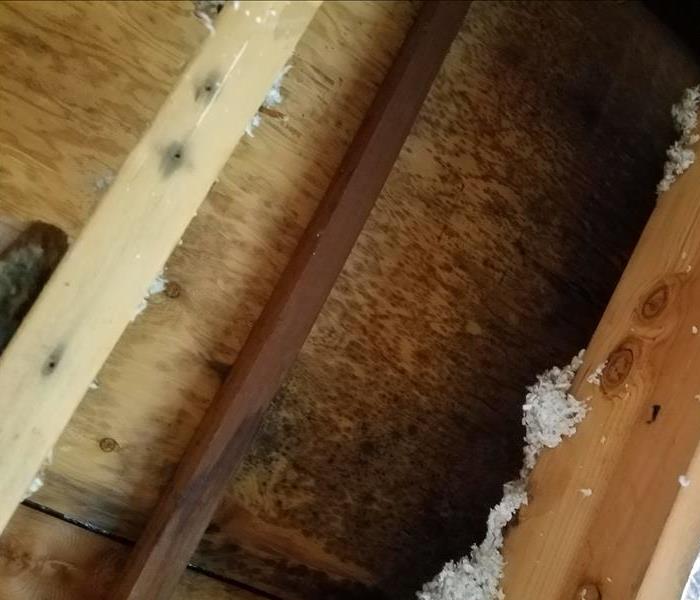 Mold caused by storm damage, here at SERVPRO Cedar Mill, we're ready to tackle it!
Mold caused by storm damage, here at SERVPRO Cedar Mill, we're ready to tackle it!
Just because the weather is getting colder doesn’t mean you’re out of the woods when it comes to mold. Mold is still alive, even in freezing temperatures.
How Does Mold Continue To Thrive In Winter?
Mold needs moisture and darkness to proliferate, and winter is primarily wet and dark. It is one of the best times of year for fungi to grow and multiply.
During winter, we tend to close up our homes when it gets colder, and a tightly sealed, warm home lends itself to mold growth, especially in wet or moist areas with improper ventilation.
Mold growth in winter is not only relegated to inside the home. The outdoors has its own special blend of circumstances for mold to thrive—most notable of which is dead plant matter. When leaves fall and plants die, the decaying plant matter releases mold spores in the air.
Can Mold Live In Freezing Temperatures?
Surprisingly, yes. Even in freezing temperatures (below 32° Fahrenheit), mold is still a living organism. Mold spores can survive very extreme environmental conditions. They lie dormant in extreme cold, but at the hint of a thaw, they will grow once again, outdoors or even in your freezer. Low, or freezing, temperatures do NOT kill mold—even if it lies dormant for an extended period of time.
Mold will come back as soon as conditions are right for it do so. All spores need are moisture, a bit of heat, and “food” (organic material that contains carbon atoms) in order to grow. That is all it takes. Within 24-48 hours of a thaw, mold spores start to multiply.
How Do You Prevent Mold (Or Get Rid Of It) In Winter Months?
The same way you do any other time of the year—fix any known leaks, dry out the moisture in your home, clean the mold affected areas and remove and dispose of items that can’t be cleaned.
Fungi thrives on quick-to-decompose items such as books, piles of loose papers, or boxes of clothing. If you’re storing those things long-term, pick an area away from external walls or windows that invite condensation.
If you are concerned about the possible health risks associated with handling mold or that your home might be damaged during the cleanup process, call us here at SERVPRO with any questions you may have.
Commercial Mold Removal In The Cedar Mill Area
1/11/2018 (Permalink)
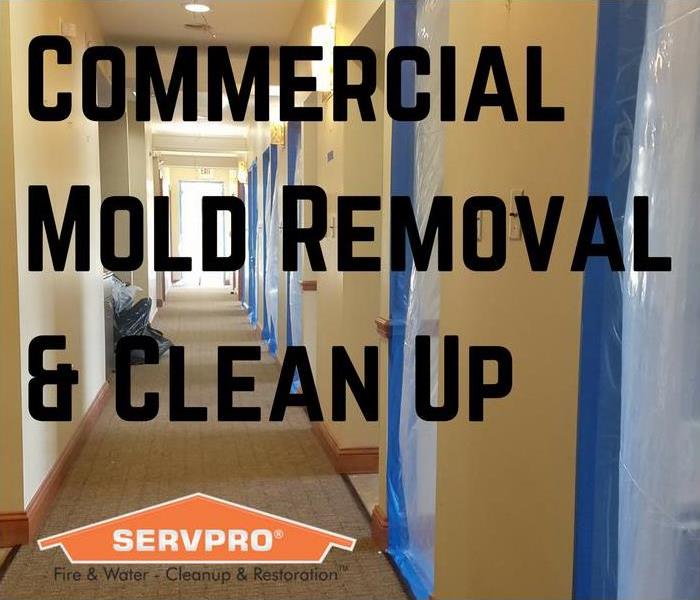 SERVPRO sealed the deal and the room on this moldy problem!
SERVPRO sealed the deal and the room on this moldy problem!
Mold in your business is a nightmare!
This local office called SERVPRO to help them with a major mold issue. They realized the value of swift, professional help when it comes to mold remediation.
Upon arrival and investigating the office we felt the need to seal off each individual room due to the scale of the mold problem.
We then took the proper steps to clean and sanitize the mold as we worked throughout the building making sure that each room was free of mold and ensuring the spread would not recontaminate the freshly cleaned areas by sealing with commercial grade plastic.
The work is nearing completion and the client will be able to get back to work in no time at all.
If you have a mold problem in your home or business in the Cedar Mill area call SERVPRO today! (503) 619-6198
Don't Mess With Mold In Cedar Mill
10/5/2017 (Permalink)
 SERVPRO of Cedar Mill / Oak Hills removes mold the correct way.
SERVPRO of Cedar Mill / Oak Hills removes mold the correct way.
Mold, in a home or business, can be damaging to both the structure of the building itself as well as the people who work or live in the building.
DO NOT take your time when dealing with the mold removal process in your Cedar Mill home or business.
Are there Health Concerns?
YES. Some molds can be harmful and toxic and need to be removed as quickly as possible. They can lead to an unpleasant living or working situation and ultimately can make some people or animals sick.
Structure Cleaning
Sometimes you can get away with simply cleaning the surface of the structure to get rid of mold. Most times it is better safe than sorry so you should call in Mold Removal professionals like SERVPRO of Cedar Mill / Oak Hills who have the right tools and training to get the job done right the first time. We sanitize on a level that is not common with regular household products and DIY'ers.
If you are overwhelmed by mold in your home or office make sure you call SERVPRO as quickly as possible. (503) 619-6198
Never Use Bleach To Kill Mold
5/12/2017 (Permalink)
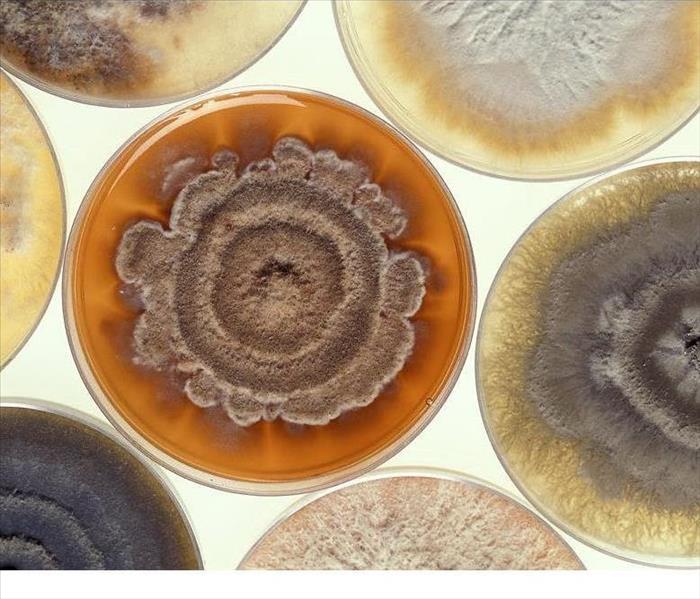 Mold has many colors and shapes.
Mold has many colors and shapes.
For many households, chlorine bleach is generally seen as your “go-to” cleaner for tough jobs. Mold removal does requires a heavy duty cleaner, but recently, many of the hazards of bleach are gaining more media attention causing people to take a closer look at the way they clean.
OSHA (Occupational Safety and Health Administration) was one of the first federal agencies to STOP recommending the use of liquid bleach for mold remediation. The EPA (Environmental Protection Agency) has since edited their “A brief guide to mold and moisture and your home” to exclude their once suggested use of bleach as a means to kill mold.
So what actually is mold? Let’s go over the basics to get a better understanding of how it works and how it should be properly treated.
NO ONE KNOWS HOW MANY SPECIES OF FUNGI EXIST BUT ESTIMATES RANGE FROM TENS OF THOUSANDS TO THREE HUNDRED THOUSAND OR MORE. - CDC.GOV
According to scientists, mold is a type of fungi that is neither plant nor animal. This basically means, unlike plants, it cannot derive energy from the sun or actively “hunt” for food like an animal. Therefore, mold must be opportunistic to survive. In order to reproduce, it regularly sends microscopic spores into the air searching for a suitable environment to live. It only needs a few requirements to survive: water, warm temperatures and a food source. Once it has located the perfect environment, it can begin to grow remarkably fast, sometimes within 24 hours! This is why we often see a mold bloom after flooding, water damage and undetected burst pipes etc…
So now that we know how it works, how do we properly treat it? Big bleach labels have promised you that nothing else will do the job like bleach. Chlorine bleach is most well known for it disinfecting properties but that doesn't mean it's the best choice for mold. It’s main function is to disinfect and to, well, bleach or change the color. But after use, what usually happens? The moldy color looks like it’s gone but within a week or two the mold usually comes back and sometimes worse! Most homeowners don’t put together that it’s the bleach causing this reaction and not a really bad case of mold. The fact remains that if the mold is not removed from the material, it will most likely always return.
Does Bleach kill mold?
Yes, but it comes with a catch. Bleach labels will warn you that chlorine bleach will only be effective on a “hard, non-porous surface.’’ This basically means that chlorine bleach is not made to “soak in.” Therefore, its disinfecting properties are limited to a hard surface like tile or glass. So here’s the problem: To ensure survival, mold spores spread its roots (Mycelia) deep into a porous surface. Mold remediation requires a cleaner to reach deep down into wood and other porous building materials to remove or "pull out" the roots. The properties of bleach prevent it from soaking into these materials. The surface mold looks gone (it's bleached white) but the internal mold always remains to grow back.
Another issue: Bleach contains 90% water and mold LOVES water. When bleach is applied, the chlorine quickly evaporates after use leaving behind A LOT of water. This water often soaks into the porous surface allowing the mold to flourish and re-grow in this moist environment. So in effect, using bleach actually feeds the internal mold spores! Although the surface may look bleached and clean, the remaining spores will root deeper, stronger and will often return worse than before.
"This chemical is considered hazardous by the 2012 OSHA Hazard Communication Standard. Sodium Hypochlorite (Chlorine Bleach) MSDS requires handlers in FULL Personal protection gear including respirators."
-CDC.gov
Bleach and mold. A few facts to remember:
- In some cases, bleach will encourage toxic mold to grow where it was not present before.
- Bleach will only remove the green stain from mold. The surface will appear clean but internal roots will continue to grow.
- OSHA and the EPA have specifically advised against the use of bleach for mold remediation. See link below*
- Chlorine bleach is caustic and extremely harmful to wood and many other surfaces. If bleach is used on wood, it will weaken the wood by breaking down its fibers. This can create further problems with the structural integrity of the home.
- When bleach is mixed with ammonia it creates a deadly gas! *Remember, Urine contains ammonia! Using bleach in the toilet could also create a toxic gas.
- Bleach itself is considered a toxic chemical and is classified the same as gasoline.
- In its gaseous form (room temperature) chlorine releases Dioxins, a known cancer causing compound.
- Bleach is highly corrosive to skin. Exposure to bare skin creates a hydrolysis reaction. This means the “oily” feeling is actually the top layer of your skin beginning to dissolve!
- Bleach is not only hazardous to your health, it will make your mold problem worse in the long run.
What is Black Mold?
4/21/2017 (Permalink)
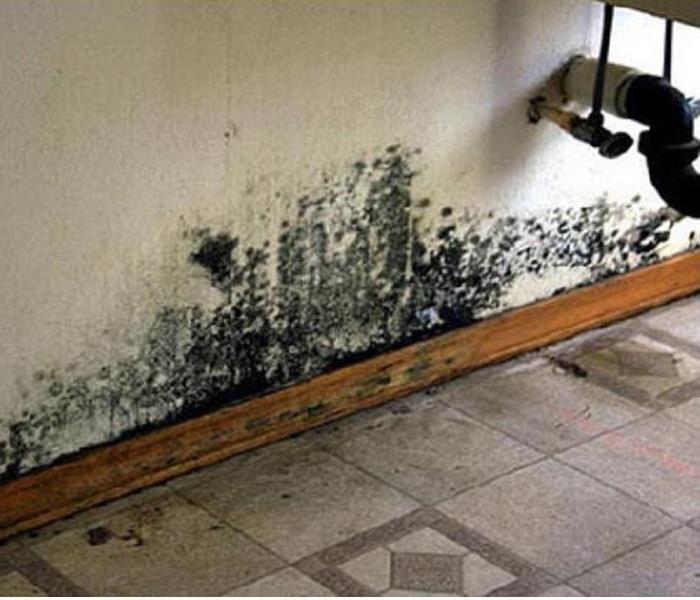 Don't try to get rid of this yourself...call a professional today!
Don't try to get rid of this yourself...call a professional today!
What Is Black Mold?
Stachybotrys chartarum is the type of mold often called “black mold” or “toxic mold”. Sensational news reports warn about the dangers of black mold and these stories can be alarming and confusing. Any mold in your home should be treated with caution – stay out of affected areas and don’t touch or disturb the mold.
Please refer to our Mold Damage Tips to learn more about mold and what to do until help arrives.
How Do I Tell If It’s Black Mold?
Since many types of mold can produce allergens and irritants, you should contact a qualified mold remediation company regardless of the color or type of mold. In many instances, multiple types of mold can exist in the same house or structure. If you suspect that you have a mold problem, contact a SERVPRO Franchise Professional immediately. Click here to find a SERVPRO Franchise.
If You See Signs of Mold, Call Us Today 24/7 at 503-619-6198!
Understanding Mold
When water intrudes into your property, mold growth can start in as little as 48 hours. Consider the following mold facts:
- Mold is present almost everywhere, indoors and outdoors.
- Mold spores are microscopic, float along in the air, and may enter your home through windows, doors, or AC/heating systems or even hitch a ride indoors on your clothing or a pet.
- Mold spores thrive on moisture. Mold spores can quickly grow into colonies when exposed to water. These colonies may produce toxins harmful to humans and pets.
- Before mold remediation can begin, any sources of water or moisture must be addressed. Otherwise the mold may return.
- Mold often produces a strong, musty odor, and that odor can lead you to possible mold problem areas.
- Even higher-than-normal indoor humidity can support mold growth. Keep indoor humidity below 45 percent.






 24/7 Emergency Service
24/7 Emergency Service

